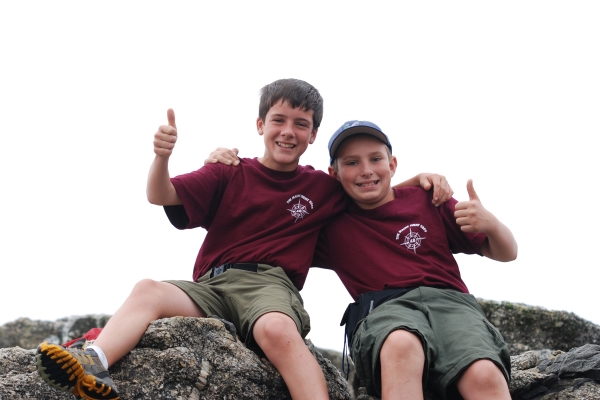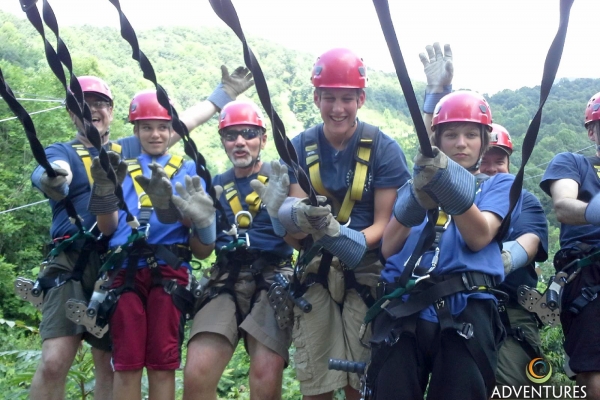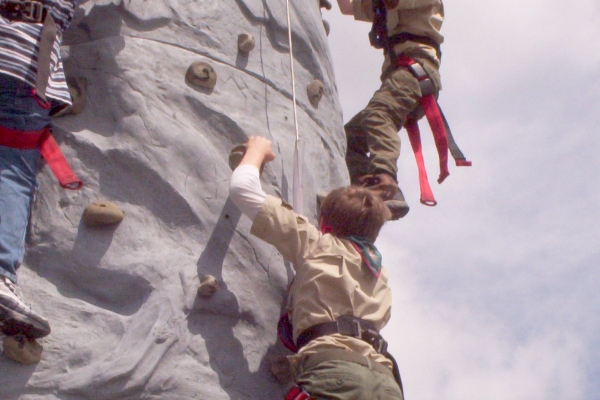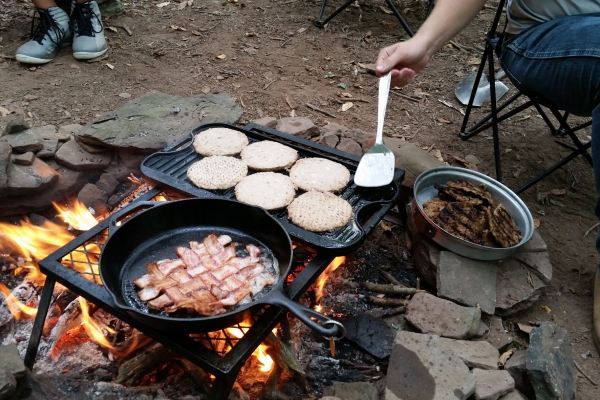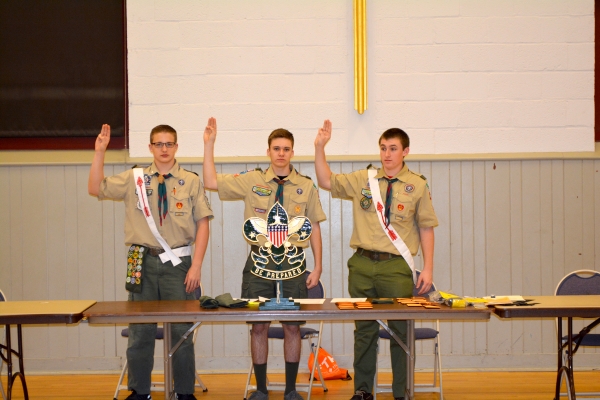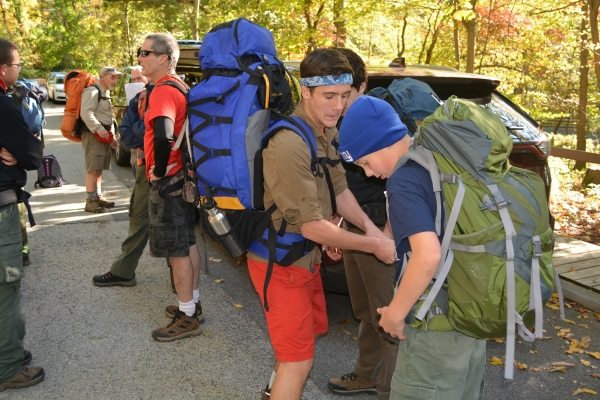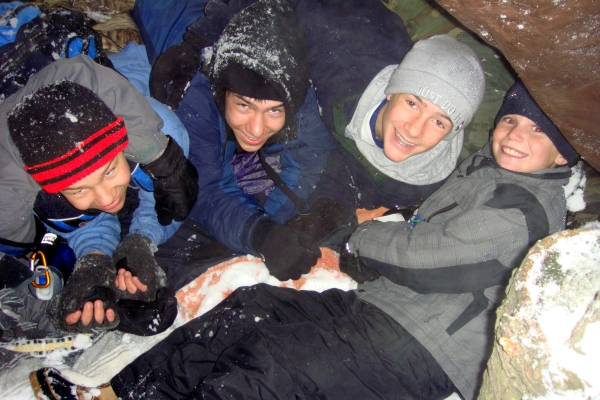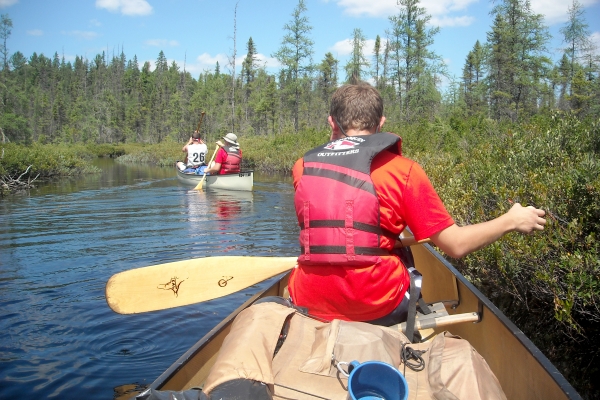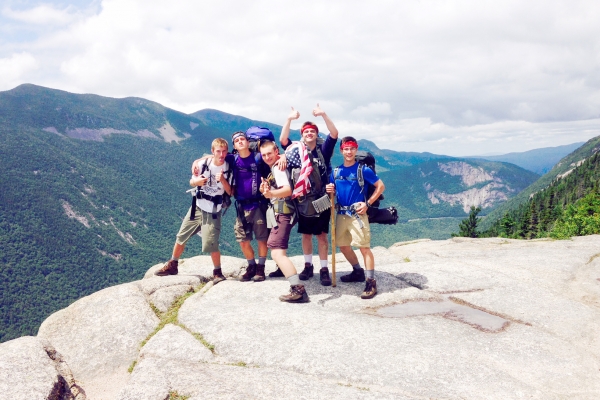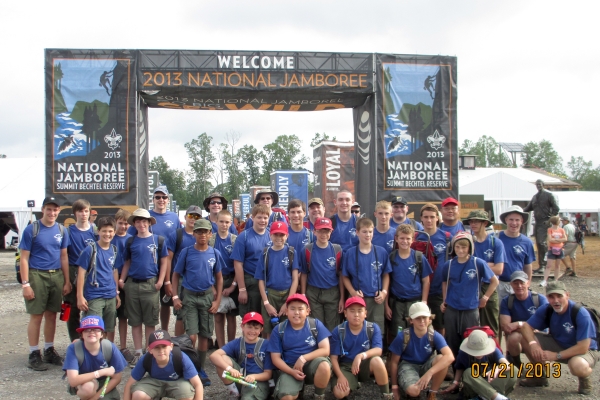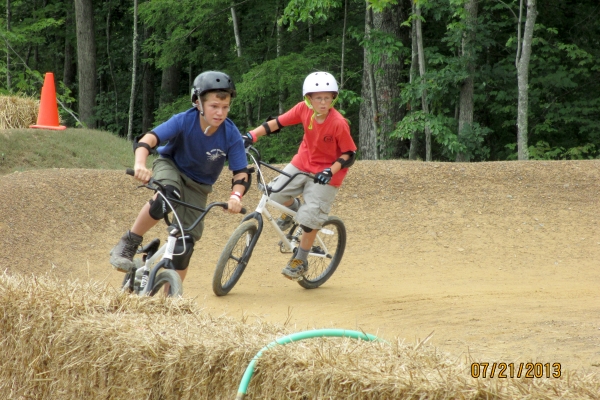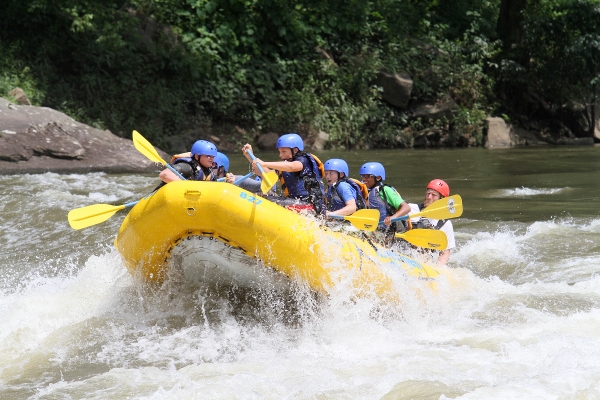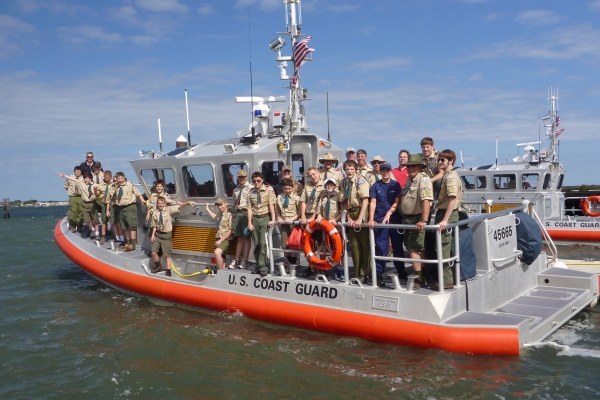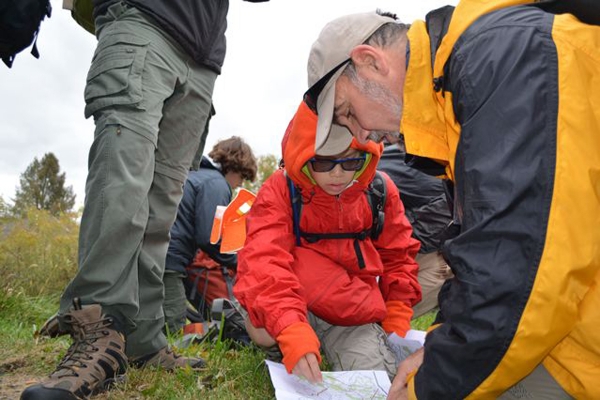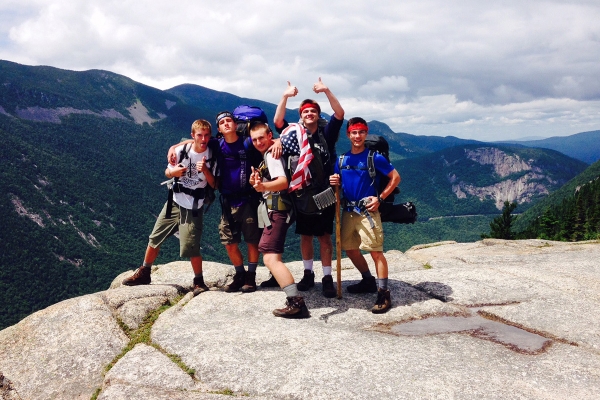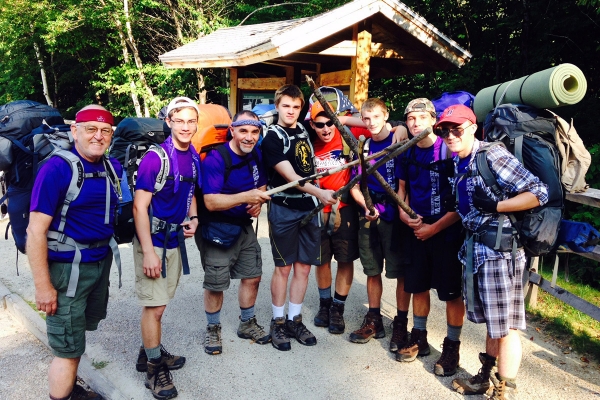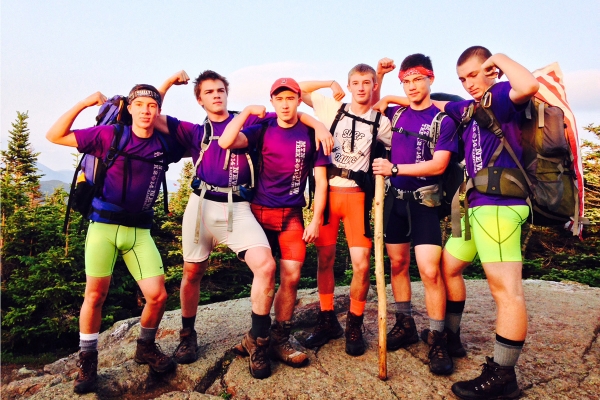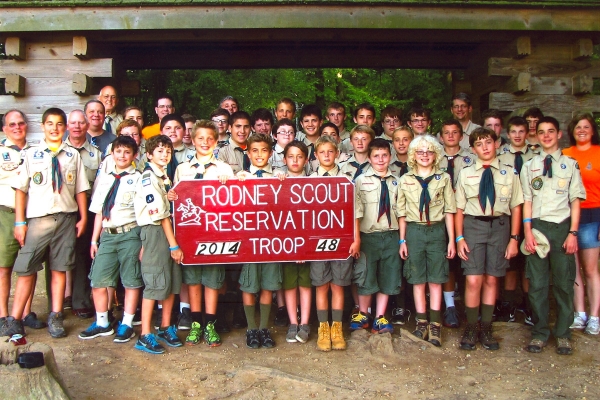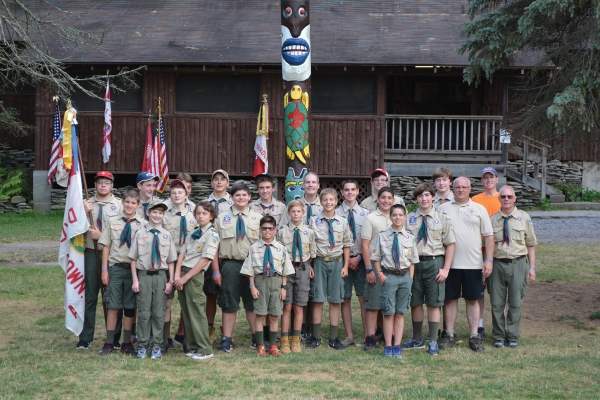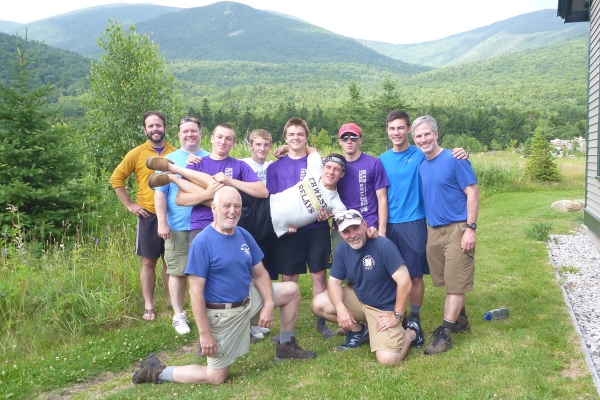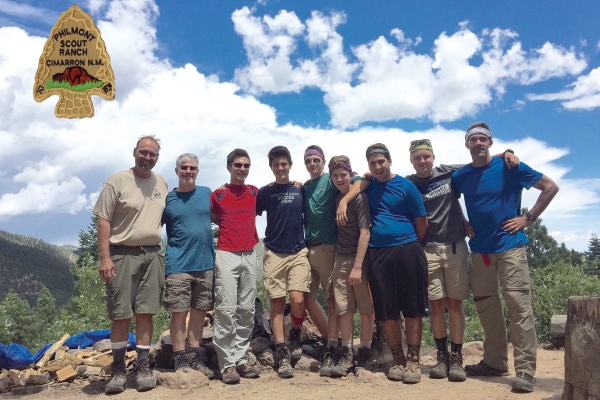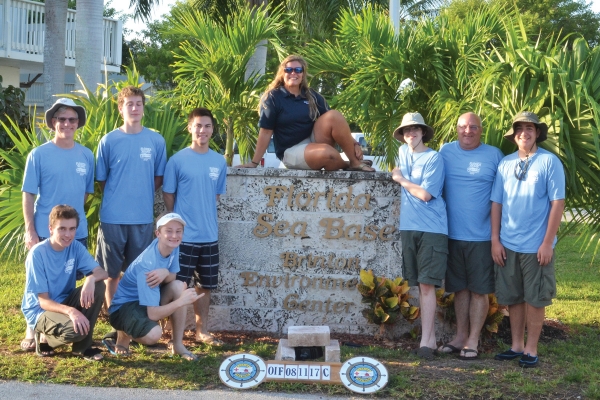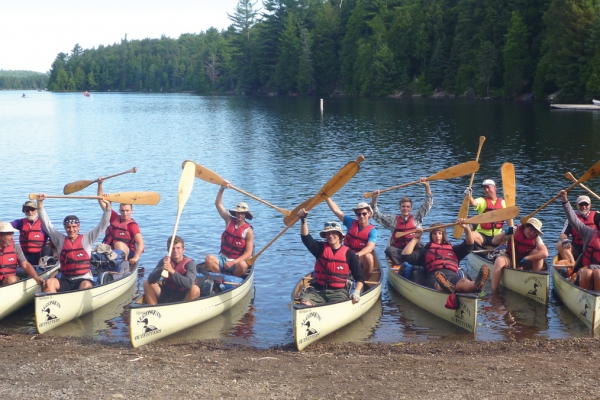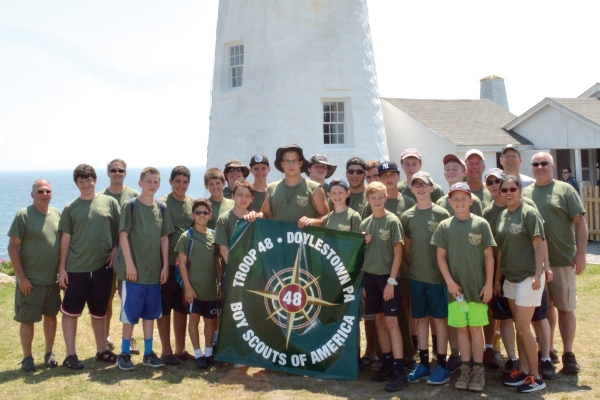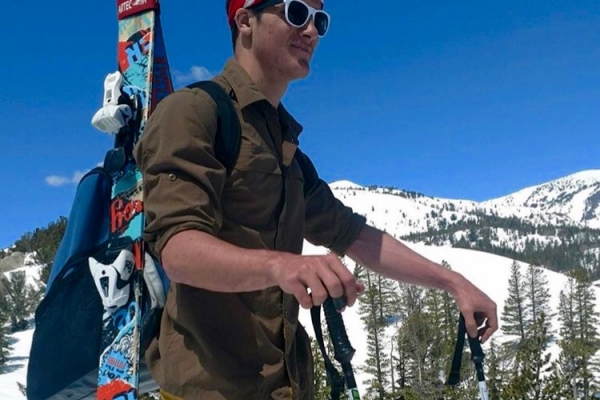
There's a lot of scouting knowledge under that hat. Read the latest insights from our Scoutmaster.

Extra, Extra, read all about it! Get you latest Troop 48 News in The Pathfinder.

How many glasses of water do you drink every day? Every doctor will tell you that you can't drink enough especially when you're hiking or scouting around.

When's the last time you took a good long walk? How about a hike with everything on your back? How about a hike that covers 132 miles? Check out the Horse Shoe Trail.

What’s on the menu this weekend? Check out these trail and camp recipes for good eats.

Looking for pictures of our adventures far and wide? Check out our photo gallery.

So does moss really only grow on the north side of trees? Do all streams lead to civilization? How are your Orienteering Skills?

Can you tie a bowline on a bight? How about a sheepshank? How about we start easy— an overhand knot? Join the Knotheads

Want to know how Troop 48 got started? Want the Inside Story?

When it comes to camping we’ve slept under the stars from Virginia to Maine and the Chesapeake to the Rocky Mountains. Check out our summer camp adventures.

The order of The Arrow is Scouting’s elite honor service organization. Learn More.
Knotheads
Every week at our Scout meetings we offer a challenge to every scout to tie a knot or two. For every five knots you can tie correctly with no prompting you'll be awarded a new colored rope to show everyone else that you're a knothead.
Here's what you need to know:
PINK ROPE CLUB
SQUARE KNOT
TWO HALF HITCHES
TAUT LINE HITCH
OVERHAND KNOT
FIGURE EIGHT
YELLOW ROPE CLUB
TIE A CLOVE HITCH
SHEETBEND
BOWLINE
WHIP THE END OF A ROPE
TIMBER HITCH
BLUE ROPE CLUB
SHEEP SHANK
ONE HANDED BOWLINE
THROW A CLOVE HITCH
SQUARE LASHING
DIAGONAL LASHING
SHEAR LASHING
BROWN ROPE CLUB
BOWLINE ON A BIGHT
CROWN KNOT
BACK SPLICE
EYE SPLICE
Here's the catch....Once you've earned your knot, you need to keep practicing because any member of the Knothead Club can challenge you at any time to demonstrate your skills. If you fail you turn in your knot for a week and start all over again earning your way up the knot ladder. So what are you waiting for? Start tying and soon you'll earn the right to be called a Knothead too!
Scouting Around
Staying hydrated while you hike is extremely important. When you become dehydrated from too little water you get a build-up of lactic acid in your muscles, especially in your legs. Your body begins to tighten up and hurt, and you'll get exhausted in no time. This can be particularly dangerous when you're out hiking with no access to fresh, clean water. Dehydration during hikes can also cause hypothermia, which is a dangerous raising of the body's internal temperature. This can cause nausea, lethargy, heat stroke, heat exhaustion, and more.
To stay hydrated during your hike, bring a few aluminum water bottles filled with fresh water. Whenever you feel a bit tired, or if you've been walking uphill for a while, stop and take a few sips of water. Don't drink too much at once or you'll give yourself cramps. Instead, just take a couple of drinks to make the thirst fade. If you don't want to pack water bottles, try a hydration pack. These are small backpacks that are designed to hold only water, usually with a way to drink the water while you walk. Carrying it on your back will also distribute the weight and keep you from becoming exhausted.
When you're hiking be on the lookout for signs of dehydration. These include thirst of course, by also sticky saliva, lost elasticity in your skin, and dark yellow urine. If you're hiking and become severely dehydrated without a fresh water source you can purify water you come across with a water purifier, although these can be very expensive. They'll kill the bacteria in the water and can make a good back-up plan to have if you're going to be hiking for a long time or going far off a path.
Staying hydrated while you hike will keep nausea, heat stroke, and lethargy at bay, as well as fight the exhaustion and muscle ache. Proper hydration will also save your life if you're hiking in the summer in high temperatures by fighting hypothermia. Never go hiking without bringing a large supply of fresh water with you, and ideally a backup plan like a water purifier.
Special Announcements
Check here often for new announcements and reminders about upcoming dates, deadlines and events.
There are no new announcements at this time.
Orienteering Skills
Troop 48 takes great pride in their ability to use a compass and read a topographic map, after all or nickname is The Pathfinders. With so many people becoming ever reliant on GPS systems to find their way out of a parking lot being able to read a map is a dying art that we aim to preserve. On this page you'll find tips, tricks and questions and answers about orienteering. Check back often to stay sharp and learn new things. Who knows when your Mom's GPS will go on the fritz and you'll be needed to find the way back home.
Q: How many colors are on a topographic map and what does each color represent?
A: There can be up to 7 colors on a topographic map—
Black — Man-made objects like houses, roads, silos, railroad tracks and lots more
Red — Major highways
Brown — Elevation. Brown lines on the map are called contour lines and they show us changes in the shape of the land.
Blue — Water, like lakes, rivers and ponds
Green— Vegetation, like woodlands, fields, marshy areas and orchards
Purple—Changes to the map since the last printing
Yellow — Dense areas of population like cities and towns
Q: Where can I find the Marginal Data?
A: I the margins of the Map! This was sort of a trick question but in the margins you'll find a scale to determine how far a mile is on the map, a reference for special symbols used, the date when the map was printed, the compass rose to help you orient the map and more.
Q: How do I orient a map?
A: Orienting a map means rotating it so that north on the map aligns with north on your compass. It's sort of embarrassing to follow a map for any distance only to find out you've been walking south when you wanted to go north. Use your map and compass together as a way-finding team.
Q: What is the difference between true north and magnetic north?
A: True north is at the very top of the world at what we commonly call the "North Pole". Unfortunately compasses point slightly away from the true north pole because they are attracted to a large magnetic mass in the earth near but not directly under the pole. That means that when you orient your map, you'll need to use the magnetic designation for north noted in your marginal data, not the true north shown on the compass rose so that your map is oriented the same as your compass.
Serving Our Community
Serving the community as a Boy Scout is fun and rewarding. Participating in community service not only helps others, but it helps scouts learn skills, practice leadership and learn how to work as a team.
Troop 48 scouts make serving the community a top priority. Our goal is for each scout to obtain at least eight hours of service each year.
Just some of the community service projects that Troop 48 scouts have participated in are:
- Cooking and serving pancakes for our charter organization, Doylestown Presbyterian Church.
- Washing and polishing fire trucks at Plumsteadville Fire Company.
- Sorting and folding clothes at the NOVA Thrift Shop.
- Eating pizza with the residents of the Pine Run Lakeview Assisted Facility.
- Cleaning up the grounds of the Doylestown Presbyterian Church.
Download a community service project approval form:
Service hours are recorded in Scoutbook.
